Moroccan Farmers Compete with Solar Complexes for Access to Dwindling Water Resources
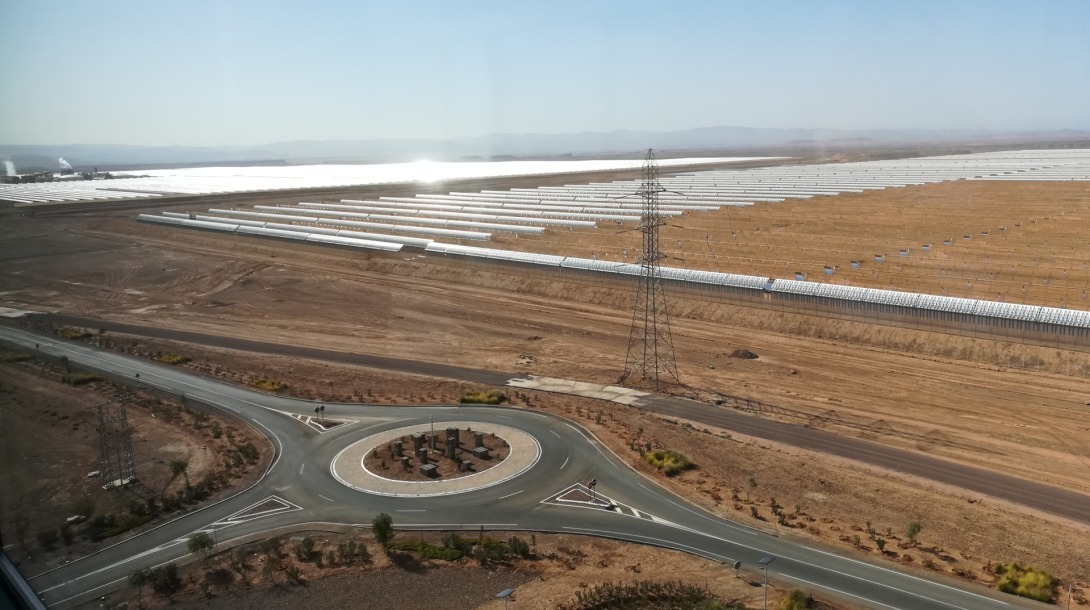
Over the past decade, Morocco has capitalized on its advantage in solar power—namely the sun-drenched arid regions bordering the Sahara—to become an international leader in renewable energy. But what do solar projects such as the enormous Noor solar power complex near Morocco’s southern city of Ouarzazate mean for the area’s residents? In generating these projects, the state appropriates collective land and uses the region’s already dwindling water resources. Residents have called attention to the lack of employment opportunities created through Noor, as well as the general lack of investment in their marginalized region.
Interview
Infographic Slideshow
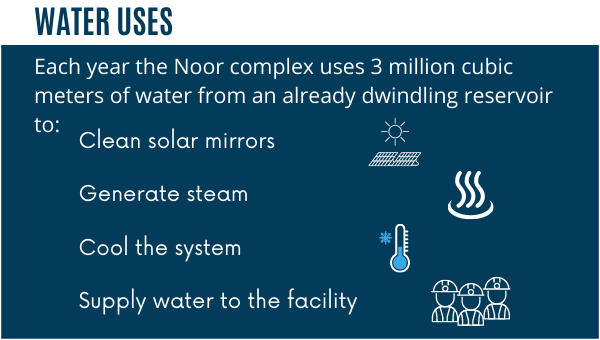
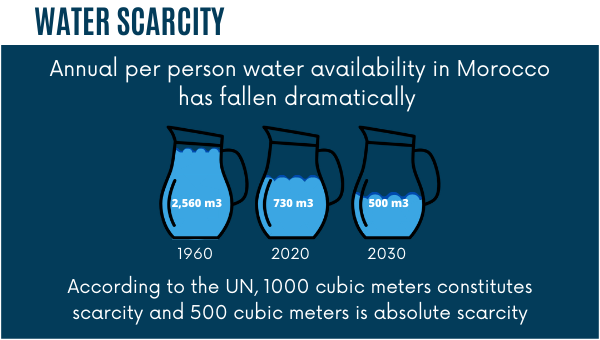



Political Cartoon
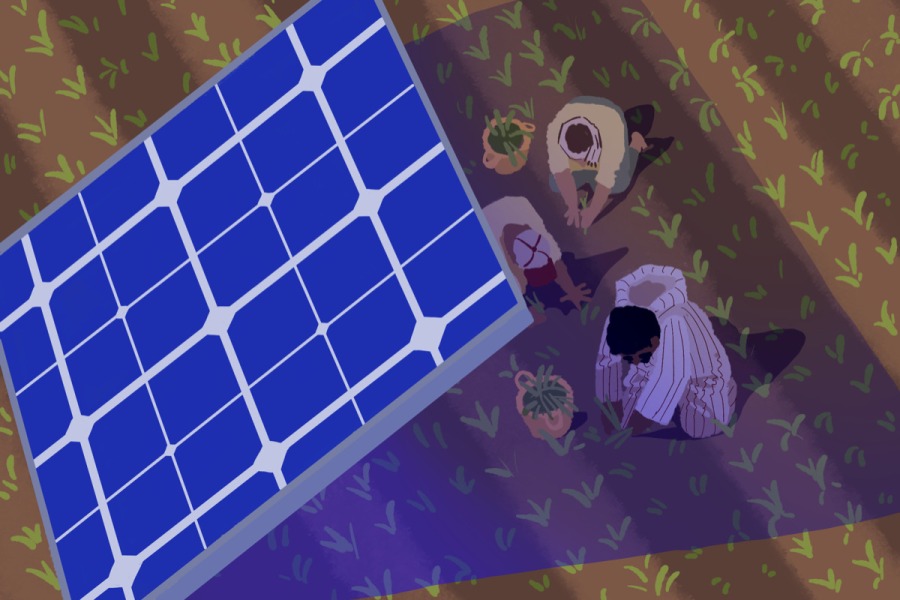
Image Slideshow
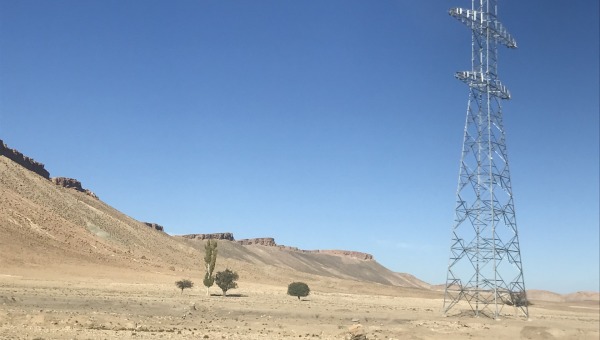

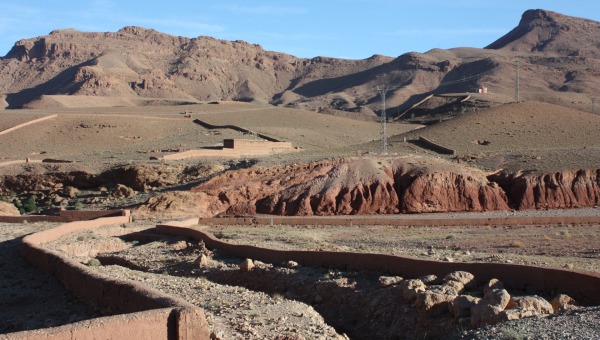
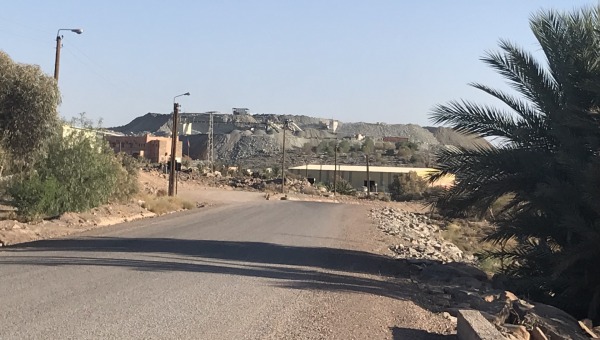
Article
“Global Aspirations and Local Realities of Solar Energy in Morocco” by Atman Aoui, Moulay Ahmed el Amrani, Karen Rignall for MERIP
Fall 2020
The reflective tower at the heart of the Noor solar power complex in Ouarzazate offers a dramatic introduction to the world’s largest multi-technology solar installation. The blinding effect of its mirror array rivals the theatricality of the movie studios that also draw visitors to this province on the edge of the Sahara. Tourists can register online with the Moroccan Agency for Sustainable Energy to visit the installation and experience a highly scripted tour that places Morocco at the center of a global renewable energy transition.
While these foreign guests can imagine a low-carbon future as they walk around the gleaming high-tech equipment, most local residents have never actually seen the installation. It is invisible, hidden behind a rocky plateau and a fenced perimeter and guarded as a securitized military zone.
Over the last decade, Morocco has capitalized on its strategic advantage in solar power—the arid regions bordering the Sahara get a lot of sun—to become a regional and global leader in renewable energy. In 2009, the government announced a National Energy Strategy to move from near complete reliance on imported energy to producing 42 percent of its power from renewable sources by 2020, subsequently upped to 52 percent by 2030. By 2020, Morocco was on track to surpass the 40 percent mark, due in large part to massive investments in solar energy capacity.[1] The central government created the legal, financial and political infrastructure for these megaprojects with extraordinary speed, in the process remaking rural landscapes and cementing Morocco’s geopolitical stature vis à vis Europe, sub-Saharan Africa and global renewable energy markets. But the country’s renewable energy plan is more than geopolitical positioning and a forward-thinking move to a low-carbon economy. It also forms part of the state’s efforts to territorialize its presence in rural hinterlands that currently represent a significant political concern for the regime.
Political rumblings in the country’s rural periphery threaten the veneer of stability that the Moroccan regime has touted in its efforts to de-risk international investment in its renewable sector and otherwise attract foreign investment, aid and tourism to the country, especially after the regional uprisings of 2011.[2] The regions surrounding the Noor installation in Ouarzazate and the 1,600 megawatt solar plant under development in Midelt province, about 280 miles to the northeast of Noor, have both seen rural unrest and other demonstrations of discontent in recent years. Political claims center on long-standing repression, economic marginalization and the central government’s lack of investment in services or infrastructure.
The tension between the regime’s techno-optimism and residents’ social mobilizations illustrates how structures of authoritarianism can facilitate the rapid expansion of renewable energy while also reinforcing existing social and economic inequalities—challenging assumptions that a low-carbon energy transition is inherently progressive. Renewable energy megaprojects can buttress exclusionary political regimes and the same economic systems and practices that produced the climate crisis in the first place. In Morocco, renewable energy also feeds rural political opposition and claims for equity, transparency and political participation.
Recommended Reading/Resources
- “Noor Solar Power Complex, Morocco,” Environmental Justice Atlas, https://ejatlas.org/conflict/noor-solar-power-complex-ouarzazate
- Karen Rignall, “Solar Power, State Power, and the Politics of Energy Transition in Pre-Saharan Morocco,” Environment and Planning A: Economy and Space 48 (3): 2015, https://journals.sagepub.com/doi/10.1177/0308518X15619176
- Hamza Hamouchene, “The Ouarzazate Solar Plant in Morocco: Triumphal ‘Green’ Capitalism and the Privatization of Nature,” Committee for the Abolition of Illegitimate Debt, 25 March 2016, https://www.cadtm.org/The-Ouarzazate-solar-plant-in
- Jessica Barnes, “Water in the Middle East: A Primer,” Middle East Report 296 (Fall 2020), https://merip.org/2020/10/water-in-the-middle-east-a-primer-296/
- Zakia Salime “Life in the Vicinity of Morocco’s Noor Solar Energy Project,” Middle East Report 298 (Spring 2021), https://merip.org/2021/04/life-in-the-vicinity-of-moroccos-noor-solar-energy-project-2/
- Joanna Allan, “Renewable Energy is Fuelling a Forgotten Conflict in Africa’s Last Colony,” The Conversation, 26 November 2021, https://theconversation.com/renewable-energy-is-fuelling-a-forgotten-conflict-in-africas-last-colony-170995
- Christian Haddad, “Imagined Inclusions into a ‘Green Modernisation:’ Local Politics and Global Visions of Morocco’s Renewable Energy Transition,” Third World Quarterly 43 (2): 2022, https://www.tandfonline.com/doi/full/10.1080/01436597.2021.2014315
- Cartoon by Deena Mohamed: https://deenadraws.art/en/home
Visit our Resources Page for more materials related to environmental activism in North Africa.
If you’re interested in this topic and would like to invite a faculty expert to speak to your students visit our Zoom-In on the Middle East Speaker’s Bureau page to explore available experts